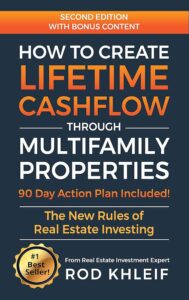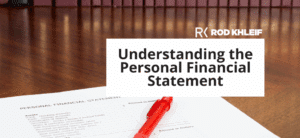If you’re a 45- to 65-year-old entrepreneur, physician, engineer, or small business owner who already earns solid W-2 or 1099 income, but wants dependable, tax-advantaged cash flow, multifamily real estate is the smartest way to compound your wealth. The problem? Information overload stalls even the most motivated professionals. Below you’ll find four field-tested steps that slice through the noise, replace guesswork with clarity, and launch your multifamily business in record time.
Hit the Books: With Surgical Precision
Outcome: Master the 20 percent of concepts that drive 80 percent of your investing success.
Most new investors binge content randomly and end up drowning in contradictory advice. Instead, zero in on the core pillars that matter in every market cycle:
-
Deal Analysis Fundamentals: Learn cap rate, cash-on-cash return, internal rate of return, and debt-service-coverage ratio.
-
Financing Structures: Compare agency debt, local banks, bridge loans, and syndication splits; know when each is optimal.
-
Due Diligence & Asset Management: Understand rent audits, expense reconciliations, and renovation budgets so you don’t buy a money pit.
Rod-Recommended Resources
-
Free books library Download my guides on Due Diligence, Financing, and Property Management from the Books Page.
-
Starter podcasts – Queue these episodes on your commute:
-
“Leading a Multifamily Company” with Maureen Miles
-
“Titans of Multifamily” (500th Episode)
-
“Real Estate Entrepreneur at 23”
Stream them via the Lifetime Cash Flow Podcast hub.
-
Fast lane learning hacks
-
Skim the table of contents first; highlight sections that fill your knowledge gaps.
-
Summarize each chapter in a 3-bullet takeaway; teaching yourself locks in retention.
-
Schedule one local NREIA or meetup event every month—nothing accelerates learning like proximity to seasoned owners.
Kick Some Tires. Turn Knowledge into Muscle Memory
Outcome: Build real world reps analyzing and touring properties, so underwriting becomes second nature.
Book smarts without ground experience equals paralysis. Within the next seven days:
-
Draft your “buy box.” Identify preferred asset class (B or C), unit count (20 – 80), and price range.
-
Call two commercial brokers. Explain your criteria and ask for three listings today.
-
Run the numbers. Use my free ROI calculator to evaluate rents, expenses, and financing scenarios.
-
Walk at least one property. Even if you’re months from closing, treat every tour like a live deal: drive the neighborhood, snap photos, ask tenants polite questions about parking, utilities, and management responsiveness.
Broker-relationship etiquette
-
Be upfront about your timeline; brokers respect honesty more than bluster.
-
Provide written feedback on every deal they send. That way you’ll stay top of mind for true off-market gems.
Real-world reps beat spreadsheet theory every time. After five site visits and twenty underwriting reps, you’ll glide through analysis that once took hours.
Define Clear Buying Criteria: Your Decision Filter
Outcome: Eliminate analysis paralysis by knowing exactly what you will, and won’t, buy.
Four factors create crystal-clear focus:
|
Criterion |
How to Nail It |
|---|---|
|
Price & Leverage |
Meet a lender for pre-approval so you know your max loan amount, DSCR, and required down payment. |
|
Unit Count |
2- to 4-unit deals qualify for 30-year residential financing; 5 + units unlock commercial upside but demand stronger underwriting chops. Pick one lane for year one. |
|
Condition & Renovation Scope |
Decide whether you want turnkey, light-value-add (cosmetics), or heavy repositioning (structural + systems). |
|
Property Class |
A (luxury), B (solid workforce), C (older workforce with upside), D (distressed). Match class to your risk tolerance and schedule. |
Write your criteria on a single-page PDF. Email it to every broker you meet, reference it on underwriting calls, and adjust quarterly as your competence grows.
Pick Your Target Markets: Where the Math Makes Sense
Outcome: Focus your deal hunting on markets that align with your lifestyle, network, and growth goals.
Four market types cover almost every scenario:
-
Backyard: Perfect for first deals; short drive, easy oversight.
-
Hometown: Leverage deep familiarity and family contacts.
-
Partner Boots-on-the-Ground: Tap reliable friends or colleagues who can inspect units and manage contractors.
-
Future Retirement Hub: Buy where you plan to live later; you’ll visit often and track local trends effortlessly.
Data points that matter
-
Job and population growth > 1 percent annually
-
Diverse employment base; no single employer over 20 percent of jobs
-
Landlord-friendly legislation (reasonable eviction timelines, no rent caps)
Double-check assumptions with Finding the “Perfect” Deal ,a deep dive into macro and micro-market analysis.
Pulling It All Together (The Flywheel Effect)
Learning, tire kicking, refining criteria, and evaluating markets aren’t sequential, they’re a continuous loop. Each pass through the flywheel:
-
Strengthens expertise (books & podcasts)
-
Sharpens instincts (property tours & underwriting)
-
Clarifies focus (buy box refinement)
-
Expands opportunity (new brokers + better markets)
Momentum compounds fast. Give yourself 90 days of disciplined cycles and you’ll evolve from cautious onlooker to confident offer-maker.
Common Roadblocks & Rapid Fixes
-
“I don’t have time.” Block two 60-minute real-estate sessions per week (early morning and one evening). Protect them like board-room meetings.
-
“What if the market crashes?” Underwrite with conservative rent growth (2 percent) and 10 percent exit cap rate. Deals that pencil under pessimistic assumptions thrive in good times.
-
“I’m nervous about talking to brokers.” Draft a 30-second positioning statement: “I’m actively searching for 20- to 50-unit B-class assets in North Tampa with light-value-add upside. We’re pre-approved for $3 million and can close in 60 days.” Confidence comes from clarity.
Next Action
Download my free Due Diligence guide, then grab a seat in the upcoming Multifamily Bootcamp. In one weekend we’ll underwrite live deals, tour properties, and hand you a proven blueprint to build Lifetime Cash Flow. Let’s transform knowledge into keys in/multifamily-bootcamp/ hand!












